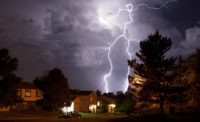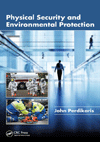Security design: Important points of protection in a building

Image via Unsplash
Protecting enterprise buildings from outside threats is no small feat. Just as a chain is only as strong as its weakest link, a building with a single unaddressed weak point is vulnerable no matter how well fortified it is everywhere else. For property managers and security leaders, taking an all-encompassing approach to securing a building is critical. From fire to armed robbery, high-risk properties including schools, banks, police stations and government buildings face a wide range of potential threats. What follows is a brief overview of the most important points of protection in one of these buildings.
Secure building design accounts for numerous threats
There are many ways that a building’s inhabitants and visitors may be put at risk, whether they are natural or manmade. Designing a property’s security measures to address all of these potential vulnerabilities means taking a close look at which areas need to be fortified and how. Here are several of the most critical ways in which buildings can be protected in the most effective way:
Fire protection
Passive fire protection helps protect people and minimize damage to property. For example, smoke detectors and fire suppression sprinklers are necessary but also can be augmented with firewalls. These specialized panels can prevent fire from spreading to neighboring rooms, giving sprinklers or firefighters time to extinguish the blaze before any further damage is done.
Surveillance systems
Cameras, alarms and motion sensors installed inside and outside the building can serve multiple purposes. Not only can their presence deter criminals from attempting anything, but also recordings of illegal activities can provide evidence to prosecute those who are not deterred. This is why it’s important to ensure areas covered by cameras are sufficiently lighted.
Security windows
Bullet resistant windows also offer protection from forced entry attempts and storm damage. Their robust construction makes them capable of resisting gunfire, blunt force, debris impacts from severe storms and even explosions in certain cases. Lower-level windows also should feature locking mechanisms but should be accessible from the inside in case they need to be used as an emergency exit.
Security doors
Similarly, doors that can be accessed from outside the building should feature security glass. This means they will provide the same level of protection and security as bullet resistant windows. Armored doors are crucial for access control and preventing intruders from forcing their way inside the property.
Safe zones
Areas where employees must interact with the public can be secured by creating safe zones. Bullet resistant transaction windows and package receivers limit the potential for workers to be threatened or assaulted. These areas also can serve as panic rooms in the event of a building lockdown by providing a secure place for employees to hide.
Controlled access
If possible, building should be designed with careful consideration of their entry points. Entryways should be placed strategically to guide all visitors to a single access point for stronger control over who can enter the building. This includes a control center where security personnel can check IDs or access badges and sign in guests.
Protective wall panels
Bullet resistant wall panels help ensure that those inside the property will have additional protection in the event of gunfire. They fortify the walls in critical locations so those on the secure side will be kept safe from stray bullets. Most commonly these will be seen in entrances, security vestibules or around ballistic-rated transaction windows to provide a complete barrier of protection. These should be placed strategically so they provide the maximum amount of coverage at ground-floor level in the areas that would be at the highest risk.
Thoughtful design
Each security measure employed in a property serves to provide another layer of protection against outside threats. It takes a combination of thoughtful design, robust construction and planned redundancy to ensure people and property are kept safe. If any area is left unprotected, it creates a potential weakness just waiting to be discovered and exploited by those who would do harm. Using the protective measures discussed here is essential for property owners and managers and can make all the difference in the world when the unthinkable happens.
Looking for a reprint of this article?
From high-res PDFs to custom plaques, order your copy today!









